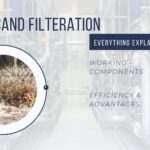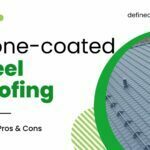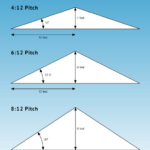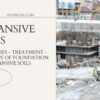Though relatively new in the industry, the popularity of composite rebar is going through the roof in recent times. The searches are in top trends for composite rebar like GRP, CFRP, or carbon fiber rebar. Due to advanced technological innovations in manufacturing, more and more projects are replacing typical steel rebar with composite rebar.
Because of its strength and durability, CFRP (Glass fiber reinforced polymer) rebar brings in plethora of benefits to your construction project. The rebar has got the inherent corrosion-resistant properties and so you can expect to prevent huge maintenance costs for concrete structures exposed to environmental conditions encouraging corrosion.
Table of Contents
- Impact of corrosion on steel rebar
- What is Composite Rebar?
- Why GFRP Composite Rebar is the new wave?
- 100% Protection against Corrosion = long life
- High tensile Strength
- Light in weight = fast construction
- Low labor cost
- Transportation advantages
- Non-conductive = no need of earthing system
- Environmental benefits
- Applications of GFRP Composite rebar
- Disadvantages of GFRP rebar
- Cost of GFRP Rebar
- FAQ

Impact of corrosion on steel rebar
Because of the number of issues resulting in concrete structures due to corrosion of reinforcement, steel rebar is now not considered as a cost-effective option. Especially in aggressive environments, designers are looking for alternates to reduce the need for maintenance and eliminate the risk of corrosion.
Corrosion of rebar not only results in spalling of concrete but also result in reduction of the reinforcement area. Therefore, corrosion results changes in mechanical properties of rebar and hence the structures are in danger due to reduction in contact area between rebar and surrounding concrete. There’s an elevated risk of slippage failure.
Also Read: Rebar – Types of Rebar in Construction – Grades & Sizes – Properties [PDF]
What is Composite Rebar?
A composite bar or fiberglass rebar is a high-strength rebar made with layers of fiberglass reinforced with vinyl ester resin. It offers plethora of benefits over traditional metal rebar: it’s lighter in weight, corrosion-resistant, and stronger than typical rebar.
In concrete structures there’s a lot of maintenance cost going on for repairing the spalling of concrete due to corrosion. But with GFRP composite rebar, you can enjoy extended lifespan of concrete structures even in challenging and corrosive environments like near sea.
With greater design flexibility due to its unique properties, Composite CFRP rebar is also an ideal choice for concrete projects requiring low conductivity. In order to make concrete stronger, tougher, and more resistant to corrosion, CFRP composite rebar should be your go-to choice.
So, read on to learn more about this exciting new material option – the CFRP rebar:
Why GFRP Composite Rebar is the new wave?
Use of high-quality reinforcing fibers in the core along with vinyl ester resins along length offers the maximum strength with added benefit of resistant to corrosive chemicals. To have a mechanical grip in the concrete, there comes the helical recess on the surface. During manufacturing, the key goes deep in the core fiber giving it high-pulling strength. So, the corrosion-resistance combined with high-strength is like a win-win for all the concrete projects.
Although, you get the GRP rebar in the translucent beige which is the natural unpigmented color. However, you can order a different set of colors for tailoring the rebar as per your site situation. Its typical length is 5 meters and you can cut the rebar to suit your site or design requirements.
100% Protection against Corrosion = long life
Corrosion has just plagued the reinforced concrete industry. It causes spalling of concrete resulting in safety issues for infrastructure. It’s a problem causing enormous financial dent because of huge maintenance costs for protecting structures like bridges, ports, and parking areas close to sea water and humid environments. But there’s no such hassle with GRP rebar.
The covering on the top of the rebar along the length significantly boost the lifespan of the concrete structures. There’s no maintenance requirement for protecting the concrete structure against water permeability. Even you can use sea water to cure concrete with GRP rebar.
High tensile Strength
The tensile strength of GRP rebar easily surpasses that of typical steel reinforcement. Because of recess key on the surface, it enhances the bond strength avoiding slipping failure in concrete structure. In typical design conditions, GRP rebar gives 20% more overall tensile strength than the typical steel rebar. GRP rebar can offer high bending and flexural properties.
Light in weight = fast construction
GRP Rebar is approximately 70% lighter than typical steel rebar. A typical 25 mm rebar has a weight of 3.853 kg per meter where as a GRP rebar 1.056 kg. Because of this light weight, it is an ideal reinforcement solution for weight-sensitive structures and also help in significant reduction of cost on foundation.
Low labor cost
Because of reduced weight and fast installation, you can save money on labor and installation cost. There’s no requirement of fixing those heavy supporting girders for heavy reinforcement and also you need less number of chairs for spacing slab reinforcement. You also don’t need a dozen of labor for maneuvering and erecting the rebar at site. This is especially a critical benefit in the COVID days where restrictions are imposed for having limited number of people working close together. This all make your installation a lot quicker and let you save more money on labor.
Also Read: Types of Rebar Support and Chair Spacing (Made EASY)

Transportation advantages
Because of the light weight, you can expect to pay 4 times lower cost overall on transportation of GFRP rebar from the supplier to your project site. Moreover, it gives you the flexibility to use alternate loading schemes instead of using heavy-duty cranes. It can be shipped in large quantities without having any loading issues. Moreover, there’s less risk related to health and safety at site.
Non-conductive = no need of earthing system
GFRP Rebar is nonconductive which is beneficial within electrical installations such as substations. GRP Rebar doesn’t need earthing in electrical applications unlike typical steel reinforcement.
Environmental benefits
It is no doubt a sustainable construction material with less carbon footprint. It doesn’t need heavy foundation and requires less fuel burning during transportation.
Applications of GFRP Composite rebar
- Uses in concrete requiring low conductivity: Applications requiring low electric conductivity or electromagnetic neutrality – electrical substations, bases for transmission and telecommunication towers, railroad crossings, specialized military structures.
- Concrete near harsh and humid environments: Structures built in or close to sea water – piers, jetties, docks, off shore platforms, decks.
- Weight sensitive structures – construction in areas of poor load bearing soil, remote locations, sensitive environments or seismic areas.’
Disadvantages of GFRP rebar
Just like pros, there’re pitfalls as well.
- GFRP rebar is too brittle in nature when compared with steel rebar. Although it provides high tensile strength but because of low modulus of elasticity it show brittle nature. When used in concrete, it won’t show much warning signs before failure. Anyhow, it’s behavior in elastic range is linear.
- GFRP rebar is not that common in applications and so special labor may be used that has the training.
- GFRP rebar can’t be bent easily at site, you need to order bent up bars directly from the factory or supplier.
Cost of GFRP Rebar
Although the cost of GFRP rebar depends a lot on the diameter and length but the typical price is $0.35 to $2.00 per meter. A typical #8 rebar with nominal dia of 16 mm costs around $1.78 per meter on average with weight around 0.460 kg per meter. For a complete deck or slab of reinforcement with GFRP composite bar, you can expect to pay around $4,000 to $6,000. Although in some cases, it may cost more than steel bar but in total installation cost, GFRP composite bar is more competitive.
Because of factors like easy transportation and installation, the overall cost of GFRP rebar may be less than the typical steel reinforcement in similar conditions.
Also Read: How much does #8 rebar weight per foot [SOLVED]
FAQ
How we compare composite rebar with steel rebar?
Composite rebar has tensile strength of over 1000 MPa and that’s way too more than the typical values of 400 to 500 Mpa for steel rebar. However, GFRP rebar do have less modulus of elasticity (i.e. it is brittle in nature). The modulus of elasticity for GFRP rebar is 46 to 60 GPa compared to 500 to 500 GPa for steel. However, GFRP rebar don’t need any extensive waterproofing additives and maintenance cost is significantly reduced. Being light weight, it is easy to transport and has reduce labor requirements.
Can you bend composite rebar?
No you can’t bend the composite rebar at site i.e. outside the production process. If you want some special shape of rebar or some bent up stirrups, you need to order the same shape from the supplier.
Where it is ideal to use fiberglass rebar?
Fiberglass rebar is ideal for its application in highly corrosive environments i.e. near sea. It is inherently protected against rusting and even you can use see water to cure concrete having composite rebar.
Does composite bar offers good bond strength?
Yes, it has spiral longitudinal arrangement on the top that act as a bond between concrete and reinforcement. There’s very less chance of slipping failure.
Can you cut GFRP rebar?
Yes, you can cut the composite bar with ordinary circular saw or cutting wheel cutter, bolt cutter, or grinder. But you can’t bend GFRP rebar because it is brittle in nature.




















